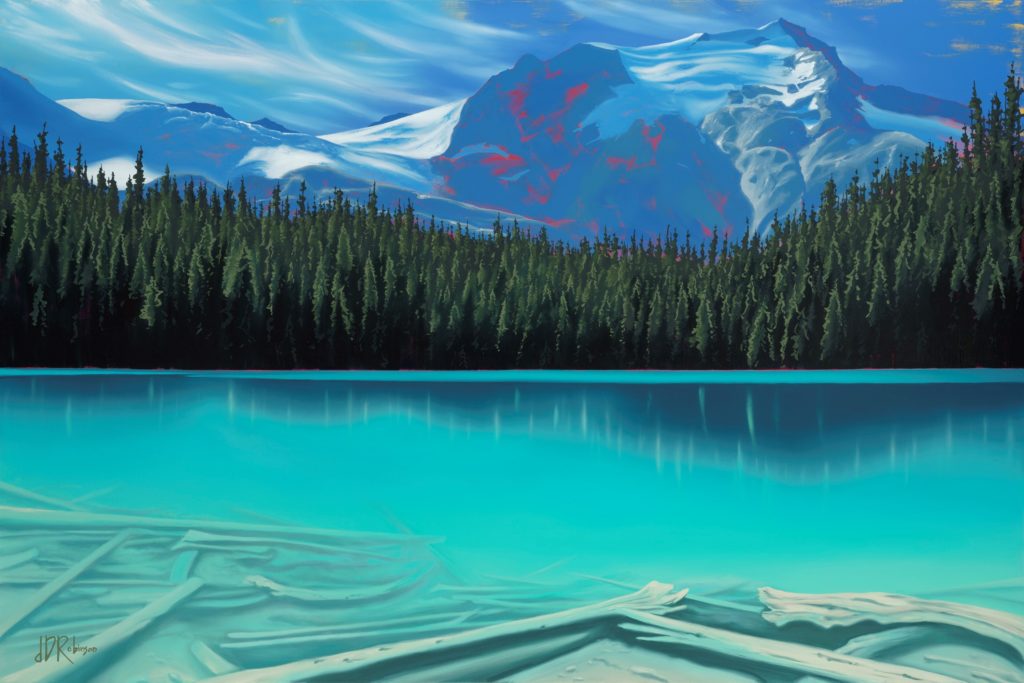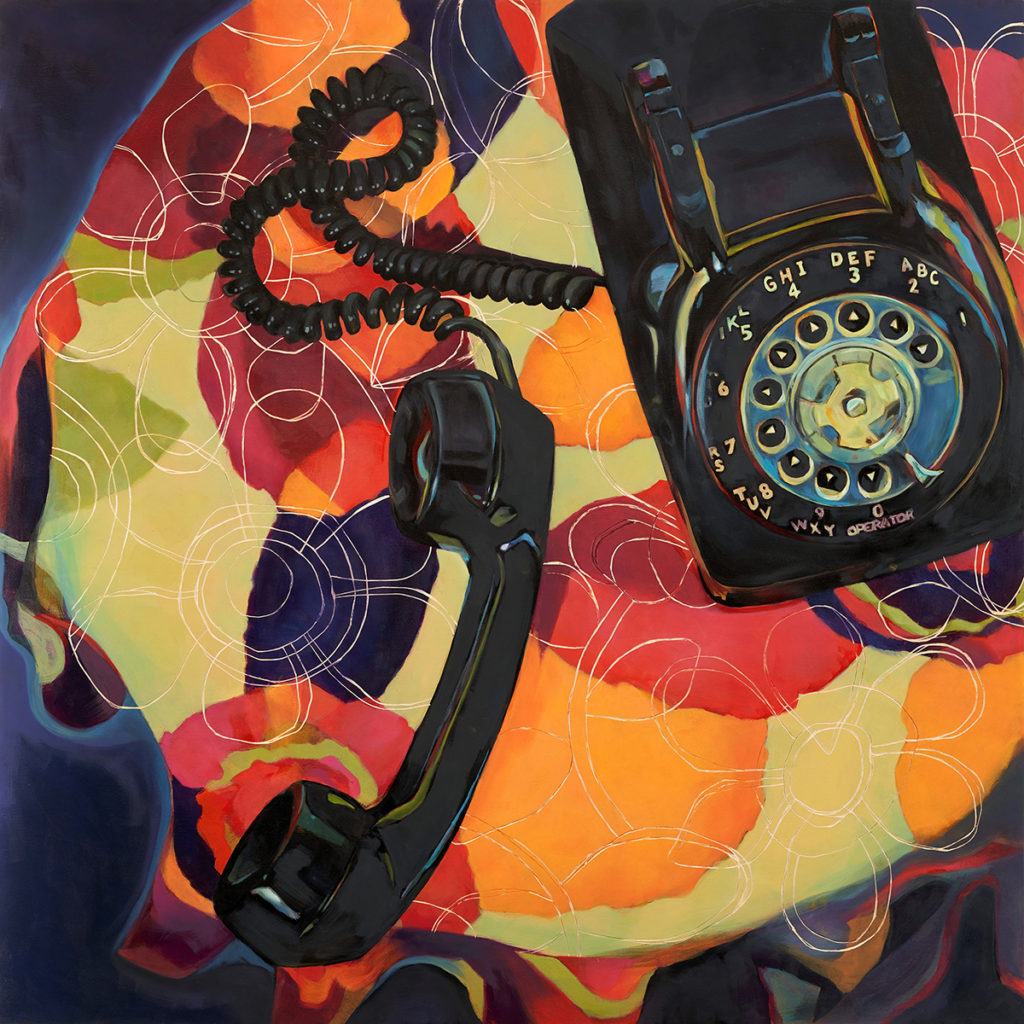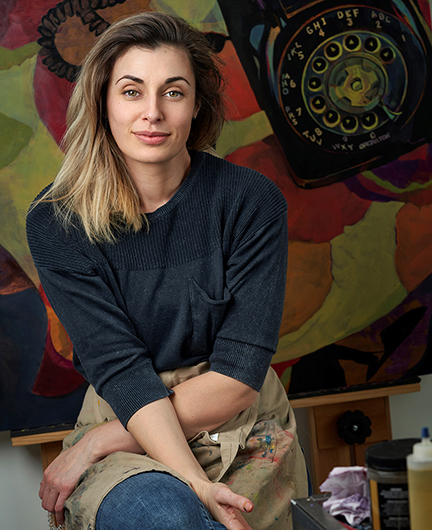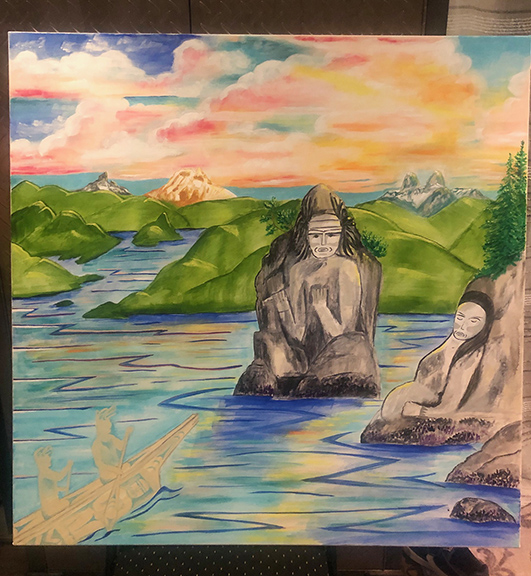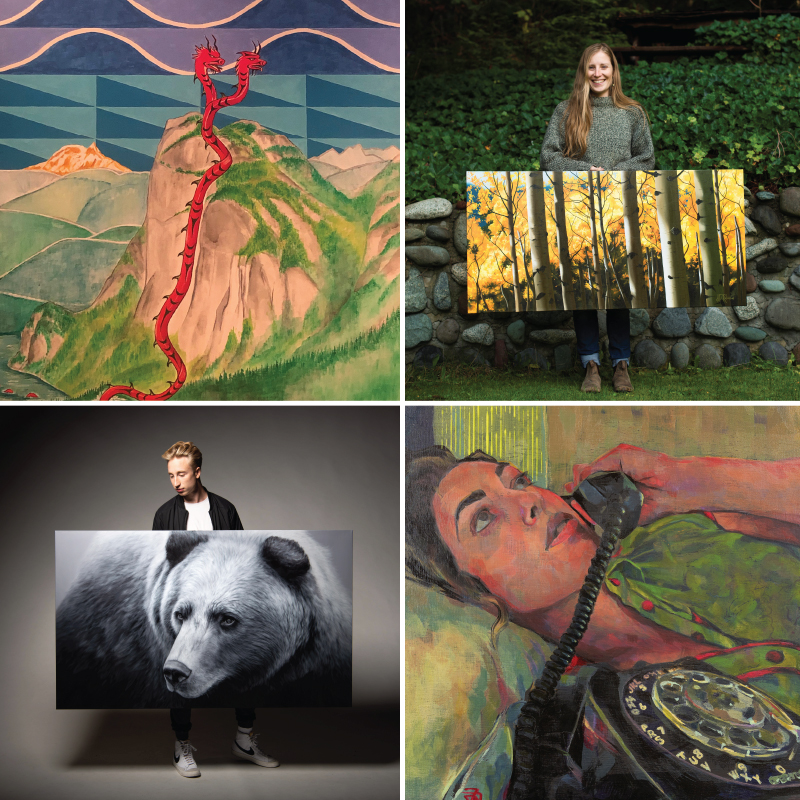
SUMMER SPOTLIGHTS
This summer Arts Whistler shines a light on four talented artists from the Sea to Sky creative community – each with their own style and unique method of storytelling.
Experience your favourite location along the Sea to Sky Highway; the voices behind the iconic rotary phone; the mythology of the Squamish Nation; and the human impact on our beautiful landscape. Each solo show is on display for two weeks only, and you’ll want to take in every one.
JENNA ROBINSON | Play of Light
FERAL NIFTY | Back in a Moment
CHIEF IAN CAMPBELL | Written In Stone
MATHIAS HORNE | Wildlife Conservation Through Portraiture

EXHIBIT:
- Exhibit Dates:
- Jenna Robinson | EXHIBIT May 20 – May 30 | ART ON SALE May 20 – June 30
- Feral Nifty | EXHIBIT June 3 – 13 | ART ON SALE June 3 – July 11
- Chief Ian Campbell | EXHIBIT June 17 – 27 | ART ON SALE June 17 – July 25
- Mathias Horne | EXHIBIT June 30 – July 11
Like something you see in the virtual tour? All artwork from these exhibits will be on sale during the following dates. If you would like to purchase, email us at info@artswhistler.com or call us during opening hours at 604-935-8410.
JENNA ROBINSON | Play of Light | May 20-30
Play of Light will take viewers on a journey through the stunning peaks, forests, and lakes of the Sea to Sky – from Vancouver to Pemberton, this exhibit depicts the Lions, Howe Sound, the Stawamus Chief, Tantalus Range, Black Tusk, and Joffre Lakes.
Robinson paints in a bold, realistic style that boarders on abstract as she enhances contrast and colour saturation. She is mesmerized by scenes where the light drapes the land in brilliant highlights and deep shadows. Her paintings portray captivating moments of alpenglow on the Tantalus range, evening golden rays illuminating the Stawamus Chief and glowering sunsets in Howe Sound. Robinson’s process of painting these bursts of colour and light on her local landscape is her way to linger in these moments, as well as share them with others.
“I consider myself a realistic painter, but I take subtle steps away from realism by mixing in looser, expressive brush strokes; amping up the vibrancy of colours; and applying a painterly style to heavily detailed subject matter.” – Jenna Robinson
BIO:
Jenna Robinson spent the first half of her life living in the Canadian Rockies and now resides in the Coast Mountain Range in Squamish, BC.
She discovered her passion for painting in high school and continued to teach herself how to paint through experimentation. The inspiration to put brush to canvas comes from her outdoor lifestyle of exploring her local mountains. Always more content outdoors, Robinson uses painting to express and share her love for nature.
Robinson’s work is realistic, yet her focus on contrast lends a surreal element to her mostly acrylic portraits of Canadian mountains, reflections, and forests. Permeating each canvas is her belief that light is an infinitely creative force that plays on landscapes; it is constantly shifting and revealing a new perspective on a familiar place.
jennadrobinson.com | @jennarobinsonart | @jennarobinsonart
FERAL NIFTY | Back in a Moment | June 3-13
Clean in line, clever in function, the rotary phone remains a universal symbol of simplicity and connection. The impetus for Feral Nifty’s series Back in a Moment came from an overwhelming interest in the practical beauty of the iconic rotary phone and the central role it played in the stories that unite us. The shared voices that are so uniquely human.
“With landlines, people fix themselves in both time and space to come together. If we follow the actual wires, they will lead us to each other. The connection is directly physical.” JJ Lee
“Through the process of painting this series I realized there are actually two paintings for every one displayed. The first painting is carefully rendered on the easel, whilst what is on the other end of the line is left to be painted in the viewer’s imagination. It never takes form but rather is brought to life in the abstract.” – Feral Nifty
BIO:
Feral never fashioned herself a serious painter. She instead took the pinball approach to her passion, the arts. From the time she was a small child her creative interests branched out to include all art forms including sculpture, theatre arts, music, etc. Painting is a relatively recent pursuit that came from a place of circumstance and practicality but quickly evolved into a passion.
Having recently moved to Whistler she found herself without the required creative space and connections needed for her many more social ventures. Painting became the creative outlet she could pursue in solitude without unpacking all the boxes. What started with a few small pieces from a pop-up home office has now transformed into a full-blown art and music studio where Feral spends her days. 90% of the boxes have now been unpacked.
In addition to her art you can find Feral Nifty’s first album on her website and on Spotify, Apple Music, YouTube etc.
feralnifty.com | facebook.com/feralnifty | @feralnifty
CHIEF IAN CAMPBELL | Written In Stone | June 17-27
Showcasing ancient Sḵwx̱wú7meshNation mythology linked to prominent landmarks throughout Squamish Nation territory. These stories have been handed down for innumerable generations and recount many chapters of change and transformation.
This exhibit honours the spirit of the land, celebrating relationships through storytelling in a way that has never been done before. Join us on a cultural journey to explore the ancient wisdom associated with many of our favourite places in the Sea to Sky, witnessing their beauty and hidden secrets.
“I give thanks to my elders and mentors for keeping our art forms and traditions alive, providing endless inspiration in showcasing Sḵwx̱wú7mesh Nation mythology and culture. I believe it is imperative to draw forward traditional knowledge and apply it in a modern context, utilizing the best tools available. This allows a continuity of tradition delivered through artistry.” – Chief Ian Campbell
BIO:
Chief Ian Campbell is a Hereditary Chief of the Squamish Nation. His ancestral name is Xalek from the lineage of Xatslanexw (Kitsilano), and his Chieftain name is Sekyu Siyam from the village of K’ik’elxn on the west side of Howe Sound. He is of Squamish and Musqueam descent and was born and raised in the village of Eslha7an in North Vancouver.
At a young age, Campbell developed a passion for art and Squamish Nation traditional language and culture. He was raised by his grandparents who immersed him in Squamish language, history, mythology, and spirituality. Hunting, fishing, mountaineering, and canoeing also allowed him to develop an in-depth knowledge of Squamish territory.
As an artist, he draws on his rich culture in showcasing ancient mythology in traditional Coast Salish art forms. He enjoys painting with acrylics, carving in bone and antler, weaving cedar and wool, and doing beadwork. He carves traditional objects used by my ancestors such as spindle whorls, elk tine blanket pins, earrings, brow bands, whale bone clubs, bone combs, daggers, and other ceremonial objects and regalia.
Campbell has designed logos for programs and teams, tattoos, clothing, as well as paint drums. He incorporates traditional Salish art forms, geometry, and realism into his art. His most recent art commission is a 12’ x 6’ canvas titled ‘Temixw’ for the Vancouver Museum, which depicts Squamish territory with over 300 Squamish stories, villages, and ecologic values.
MATHIAS HORNE | Wildlife Conservation Through Portraiture | June 30 – July 11
Experience up-close encounters with British Columbia’s Bears, through the paintings of Mathias Horne. This exhibition brings together collaborations with wildlife photographers and non-profits to celebrate and raise funds for bear conservation.
Using art as a catalyst for education, learn about how bears are integral to our west coast biodiversity and the benefits that ensuring their protection has on our shared ecosystems.
BIO:
What will we pass to our future generations and how can we educate them on what has happened to our natural systems?
Canadian artist Mathias Horne’s artwork is related to the preservation of threatened wildlife populations, by capturing both the beauty and the crisis of our changing environments. Using monochromatic realism to mimic classical photography we see depictions of an earlier time period as if the paintings have captured wildlife and places that no longer exist.
mathiashorne.com | facebook.com/mathiashorneart | @mathias_horne





